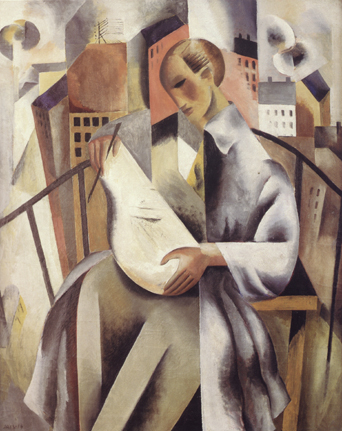Jais Nielsen
1885-1961
Jais Nielsen was born on1885 in Copenhagen, Denmark.
Born Johann Knud he took the “Jais,” this is the way he
signed his works. He began his studies at Kristian Zahrtmann’s
art school in 1899 and exhibited for the first time in the 1907 Autumn
Salon in Copenhagen. He also participated in a group show with the “Group
of Thirteen,” some of who had been students with him at the Zahrtmann
School.
Nielsen’s concentration on the human figure, and especially on
movement, was unusual in Denmark at that time. His forms became increasingly
simplified in the early years (1907-1911) and his vivid use of color,
like the Fauvists, whose work he had only seen in reproductions, was
a departure from the subdued coloration of nineteenth-century Danish
painting.
In 1911 Neilsen moved to Paris, he settled in the Latin Quarter near
the Musée Cluny. Neilsen exhibited at the Salon d’Automne
in Paris in 1912. Though Neilsen attended meetings at the Section d’Or,
which met at Jacques Villon’s studio, he apparently remained relatively
isolated from the other Cubist painters.
At the outbreak of World War One Neilsen moved back to Copenhagan. The
modern style he began in Paris stayed with him. Sports, dance and the
circus were themes that interested him greatly; he painted many canvases
in the best tradition of the early Cubists, of which he was one.
Neilsen was not well received by the critics in his own country, in
1920 he ceased to paint and concentrated on ceramics, he became world
renown for his work the Royal Copenhagen porcelain company.
Neilsen was the only Danish artist represented in the important Futurist
exhibition, “Futurismo & Futurismi” in Venice, Italy
in 1986. A retrospective was done of his work in 1986 at the Galerie
1900-2000. Neilsen’s works are in the Museum Lolland-Falsters
in Maribo, Denmark, and National Museum of Oslo, Norway.
|

